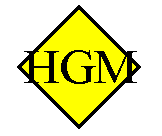
Hazardous Goods Management Ltd
Distribution Safety is Our Business
Newsflash
Alcoholic Beverages
1. Classification;
Classification is based on the Special Provisions (SP’s) relating to the entry for UN3065 in the respective regulations. The relevant SP’s for UN3065 are; 144 & 145, these state the following;
144. An aqueous solution containing not more than 24% alcohol by volume is not subject to the requirements of the regulations.
145. Alcoholic beverages of packing group III,* when carried in receptacles of 250 litres or less, are not subject to the requirements of the regulations.
Proper Shipping Name - Alcoholic Beverages.
UN Number - UN3065
UN Class - 3
Packing Group
PGII if alcohol by volume is greater than 70%
PGII is in Transport Category 2 so ADR applies to packged loads in excess of 333 litres.
PGIII if alcohol by volume is less than 70%
PGIII is in Transport Category 3 so ADR applies to packged loads in excess of 1000 litres.
For loads transported in tanks ADR applies irrespective of quantity carried.
2. Documentation
Road Mode - ADR or UK domestic
If classified as hazardous a transport document showing the following is required:
-
the UN number preceded by the letters "UN"
-
the proper shipping name supplemented, when applicable with the technical name in brackets.
-
the Class number and any additional class hazards.
-
the packing group, if assigned, preceded by the letters PG.
-
the tunnel code (D for ISOtanks and road tankers, E for packages)
-
the number and description of the packages.
-
the total quantity of each item of dangerous goods.
-
the name and address of the consignor (sender) of the goods.
-
the name and address of the consignees (receivers) of the goods.
-
a declaration as requird by any special agreement.
The driver also requires to have a copy of his Emergency Instructions in Writing and to carry his ADR Vocational Training Certificate
Sea Mode - International Maritime Dangerous Goods Code applies.
If the Alcoholic Beverage based on the above is determined to be dangerous goods then an IMDG Dangerous Goods Declaration must be completed by the shipper.
If the Alcoholic Beverage is determined to be non-hazardous (under SP144 or 145) then a Standard Shipping Note should be completed by the shipper, however it would be prudent to endorse it along the following lines:
“This shipment meets the criteria of Special Provision 145 (or 144) and is not considered to be dangerous goods”
N.B. Shipments of bulk spirit in ISOtanks would, if the alcohol by volume
is more than 24%, require a Dangerous Goods Declaration to be completed
by the shipper.
3. Exemptions
SP247 exempts wooden barrels from having to undergo UN package testing.
247. Alcoholic beverages containing more than 24% alcohol but not more
than 70% by volume, when carried as part of the manufacturing process,
may be carried in wooden barrels with a capacity of more than 250 litres
and not more than 500 litres meeting the general requirements of 4.1.1
(ADR) or deviating from the provisions of Chapter 6.1 (IMDG code) on
the following conditions:
(1) The wooden barrels shall be checked and tightened before filling;
(2) Sufficient ullage (not less than 3%) shall be left to allow for the expansion
of the liquid;
(3) The wooden barrels shall be carried with the bungholes pointing upwards;
(4) The wooden barrels shall be carried in containers meeting the requirements
of the International Convention for Safe Containers (CSC), 1972, as amended.Each
wooden barrel shall be secured in custom-made cradles and be wedged by appropriate
means to prevent it from being displaced in any way during carriage.
(5) When transported on board ships the containers shall be placed in open cargo
spaces only (Applies to IMDG only).
Road Derogation 13 (UK only)
This applies to wooden casks containing UN3065 of PGIII.
Click here for a visual guide to the transport requirements for alcoholic beverages
Client Home Page | Regulatory Update | transafe online | FAQ's | Articles of Interest | Useful External Links